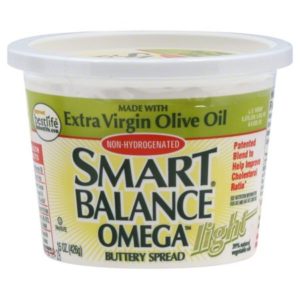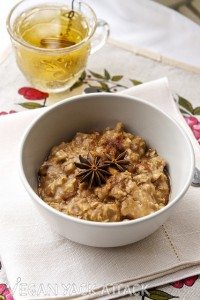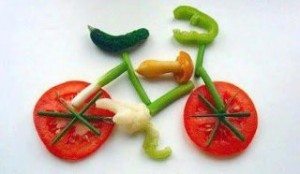February is underway… For those of you finding that a new week, a new month, a new year and this time even a new decade, enables a process of NEW ME. Not necessarily resolutions, but new goals — How are you doing on those?
Tips for keeping that NEW fire alight and alive:
MAKE YOURSELF ACCOUNTABLE:
If you ever want to accomplish a goal… tell someone. If no one ever knew about your commitments, it may be all too easy to forget they ever existed and slip back into old habits. The success of sticking it out, often comes with accountability. Tell a supportive friend or family member or find a workout buddy or support partner on your healthy ways together, or even post on social media… there is definitely something to be said by putting your word to yourself out there. consider hiring a professional… trainers, and nutrition experts know how to support you in getting you on the road to success.
DO NOT FIXATE ON “ALL OR NOTHING”
So many of my clients tell me how difficult it is to accomplish big goals. One of the biggest mistakes is categorizing yourself as an ALL or a NOTHING personality. Idealistic restrictions or targeting drastic changes quickly is a common mistake. Instead of deciding to give up a whole food group, such as never eating sugar or bread again, focus on workable solutions that fit into your your lifestyle. People who try and do a 180 within days begin to over obsess about food, over exercise too quickly, thinking faster results are the only way the balls keeps rolling. Discovering this method does not work, usually results in giving up completely. Understanding that a balance is more likely going to produce maintainable and long-term results.
LAST ONE FOR NOW….
SET OBJECTIVE GOALS WITH APPROPRIATE TIMELINES
Running a 10k road race or losing 20 lbs both sound like great goals but without planning on HOW and WHEN you will accomplish these by, make result in them always being a mere idea versus something you can put into motion. . If you choose to make a long-term resolution, make sure you list several short-term time lines inbetween.
Open-ended goals may get lost in the shuffle. Without benchmarks or timelines, there may not even ever begin.
Example: I will run 1 mile 3 times a week until March, then I will increase this to 2 miles, or 4 times per week by April. Another idea: I will switch 50% of my sodas to carbonated water with added fruit starting tomorrow. Then in February, 75%, by the time you get to April, soda in your diet can be history!! or … and as you can see, progress is realistic and accomplishable.
In summary, state your goals so that they are measurable (objective) and you will be able to track progress.
If I were to choose a February theme, most people would opt for valentines day:
Hence: My HEART HEALTHY MISSION FOR YOU:
Examine your fridge…
Categorize the “not so great… versus the “better” versus “the BEST” options: Make sure you have low fat, low cholesterol, and high fiber foods available. Fresh produce with lots of color, plan B options when fresh is not always available, such as steamable bags of veggies, egg whites you can just throw into the microwave, frozen fruit and (Greek) yogurt you can blend into a smoothie…
Hide desserts: Store indulgent foods in the crisper so that they are out of sight, out of mind. Put fruits and veggies (easy snacks) in the front and center.
Analyze your good fat calories from the bad ones: soft trans-free margarine for butter (good brands include omega 3 fatty acids versus saturated fat. Greek yogurt for processed/sugary ones, egg whites for whole eggs, and lean meat, chicken breast and fish for fattier meats.
Butter or Margarine. That is the Question. Many people are confused. Butter is saturated fat, margarine has trans fats, how does one choose a table spread?
It is unfortunate that many consumers associate trans fats with margarine – when in fact margarine contributes only a miniscule amount of trans fats to the diet. It is important to note that most of the trans fat in our diets come from processed food, baked goods and fried foods.
Softer margarines are coming out with healthier versions made with olive oil and essential fats in tubs and sprays which have very little trans fats. Many stick “spreads” have also been reformulated to be trans-fat free. Other good choices are those made with the Omega 3 essential fats, such as Benecol, smartbalance, etc.
RECIPE SELECTION:
Slow cookers are a great way to save time in the kitchen and cook a variety of lean proteins. Look for some hearty chilis (popular in the winter months) to breakfast recipes, such as slow-cooked oats, or even some egg based dishes with vegetables.
Here is one of my favorite Chili recipes – easy to throw the ingredients in the slow cooker in the morning, and when you come home from work, dinner will be ready (with plenty leftovers to boot):
Ilana’s Turkey Chili
(4 servings. Each serving = 1 lean protein, 1 starchy carb, ½ lean fibrous veg)
1¼ lbs ground turkey breast (no skin)
1 tbsp safflower oil
1 8-oz can tomato sauce
2 cups water
1 14-oz can tomatoes
2 tsp minced onion
½ tsp garlic powder
1½ tsp paprika
1 tbsp cumin
1 tsp oregano
1 tsp salt
2 tsp cayenne pepper
2 – 3 tbsp chili powder (to taste)
1 cup uncooked kidney beans, soak overnight and drained.
Combine all ingredients into a slow cooker or crockpot. Set for 5 – 6 hours or until turkey is cooked. (This recipe can also be made in a big saucepan on the stove if preferred… still tastes great with a bit more monitoring.
Healthy recipe ingredient substitutions
This chart will help you cut fat and calories in your favorite dessert recipes. The next time you plan to bake, consider some of these healthy recipe ingredient substitutions.
| Instead Of… | Use… |
| milk, whole | fat-free or 1% milk |
| eggs | 2 egg whites per egg or 1/2 c. egg substitute per egg |
| sugar | Truvia/ truvia & brown or raw Sugar Blend |
| chocolate chips | dried fruit or dark choc/cocoa/cacao |
| nuts | half required amount, toasted first |
| white flour | whole grain flour / nut flour |
| cream, heavy | equal parts half-and-half and fat-free evaporated milk |
| cream, light | equal parts 1% milk and fat-free evaporated milk |
| sour cream | light sour cream or plain greek yogurt |
| butter | benecol, smart balance, omega 3/olive oil spreads |
| fruit-flavored yogurt | plain yogurt mixed with fresh or frozen fruit |
| whipping cream | whipped topping or evaporated skim milk (chilled) |
| syrup | sugar-free syrup or sugar-free preserves or pureed fruit |
| coconut | half amount required, toasted to enhance flavor |
| traditional pie crust | graham cracker crust |
| fruit canned in syrup | fruit canned in water or juices |
Wishing you a heart healthy month in both relationships and physiology!
ILANA



































